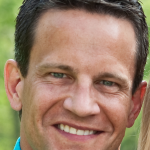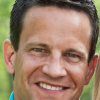 Gary Keil has made some huge life changes and if anyone has a perspective on taking risks in work-life with great results, it’s Gary. Currently, Gary is a Health Ambassador for LifeDojo and runs the Beautiful Mind Strong Body Center in Philadelphia.
Gary Keil has made some huge life changes and if anyone has a perspective on taking risks in work-life with great results, it’s Gary. Currently, Gary is a Health Ambassador for LifeDojo and runs the Beautiful Mind Strong Body Center in Philadelphia.
“If we’re not living our calling,” says Gary, “we’re in the wrong job.” Gary defines work-life integration as the intersection of three circles. Think of three circles that define:
- What you get paid to do
- What you do well
- What your calling is
At the intersection of these callings is the ideal spot for any career. Gary says that when he worked for a pharma company previously, he was paid for what he did well – and had a successful career based on typical standards, but Gary knew something was missing. He was living in the intersection of the first two circles, but wasn’t living his calling. As a result, he and his wife both left their jobs (they worked at the same big pharma company) to start their own holistic wellness center. Today, they couldn’t be happier.
Gary says that too often people are not living their callings. What’s the solution? Plenty of self-reflection. Gary says that when you wake up at 2am and your heart is pounding with stress and worry, and you’re filled with dread, that’s a clue that you’re not in your calling. On the other hand, when you wake up at 2am filled with passion and energy and ideas about your pursuits that is all good. Stress responses can literally kill us – they are unhealthy. But a thrill response – when we’re excited and positive about our direction – is literally life-giving.
When you have memorable moments in life (Gary calls them crucible moments), it’s important to reflect on those too. If you have an event associated with your work and it makes you want to run away at top speed, that’s a clue that you’re not living your calling. But if those moments feel good, you’re home.
Gary likens the need for career and personal growth to the metamorphosis that a butterfly goes through. Butterflies don’t just emerge from their cocoons changed in terms of physical form, they also do something they have never done before. They fly. Gary says we are like that too. Often we need to trust and jump – and the energy and the current of the world will lift us. It’s scary, to be sure, but it’s often the right thing to do.
“It’s not my job to figure it out,” says Gary, “I must simply believe it is possible.”
So besides fear, what are the barriers to the risking and jumping and flying that Gary is talking about? He says that habits are strong barriers. By the time we’re age 6 or 7, our world view is pretty-well established. It’s typically outside of our conscious awareness and it was set by the adults around us, by our school, and by the culture in which we grew up. If our hardwired world view is damaging or limiting, the solution is to be self-aware of our habits, to challenge them, and to have self-compassion.
So what is self-compassion? Sometimes, when we fail at something, we feel shame or disgrace, but failing is part of trying. If we’re stretching enough, we will naturally fail sometimes and the best response is to have compassion for ourselves. See the bigger picture and know that the failure was in service to learning and new opportunities for experience and wisdom.
Gary’s perspective is that, in addition to being compassionate toward ourselves, it’s also important to be compassionate toward others. When people are standing on the sidelines criticizing us, it’s often because they are personally struggling. “We’re all in process,” says Gary. It’s counterproductive to blame, to be angry, or to create hurt for others in retaliation for hurts we may have experienced. Our job, according to Gary, is to love unconditionally, and as we do, we can’t take anything personally.
Even if we don’t succeed, to have tried our best is the most important thing. In this way, we cannot blame ourselves or have any self-loathing for outcomes. We can simply focus on the process of being our best and our best selves.
In this vein, Gary has another set of intersecting circles. This time, think of three circles as follows:
- Your ideal self (meaning: your aspirational self)
- Your real self (meaning: today’s self)
- Your ought self (meaning: the self you ought to be)
Strive to live at the intersection of these three aspects of yourself. Even if you can’t live there all the time, be happy with where you are. For all of us, the universe is simply responding to who we are and how we’re acting and behaving. Strive to be happier today than yesterday.
The currency of business and life is happiness. We want to work with people who are happy and we are energized by people who are happy. Each of us is serving a purpose – and we can find meaning and calling in the process of growth, and risk, and in flight.
This is a photo of Gary and his wife Jenn at the finish line of his latest Ironman triathlon and her first half Ironman triathlon.
 Would you like to tell your story? If so, let me know by emailing me at tbrower108@gmail.com. Why? One of the foundations of Bringing Work to Life is abundance: the idea that it is possible to find fulfillment, have it all, and avoid the trade-offs between work and life. After all, work and life aren’t separate things to be placed in containers, but part of an integrated whole of a satisfying life. Another foundation of Bringing Work to Life is the idea of multiple right answers. As we’re all seeking ways to bring work to life – and bring life to work – we can learn from each other’s unique solutions and stories. I’d love to learn about your story!
Would you like to tell your story? If so, let me know by emailing me at tbrower108@gmail.com. Why? One of the foundations of Bringing Work to Life is abundance: the idea that it is possible to find fulfillment, have it all, and avoid the trade-offs between work and life. After all, work and life aren’t separate things to be placed in containers, but part of an integrated whole of a satisfying life. Another foundation of Bringing Work to Life is the idea of multiple right answers. As we’re all seeking ways to bring work to life – and bring life to work – we can learn from each other’s unique solutions and stories. I’d love to learn about your story!
Tracy Brower is the author of Bring Work to Life by Bringing Life to Work: A Guide for Leaders and Organizations.
